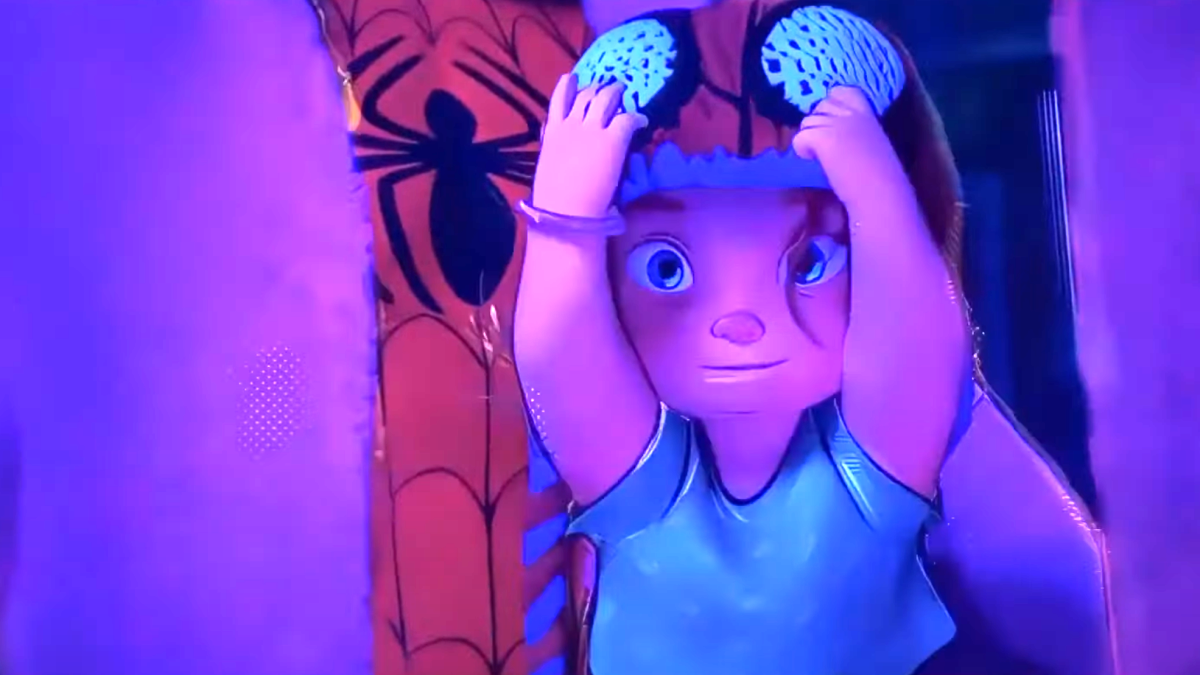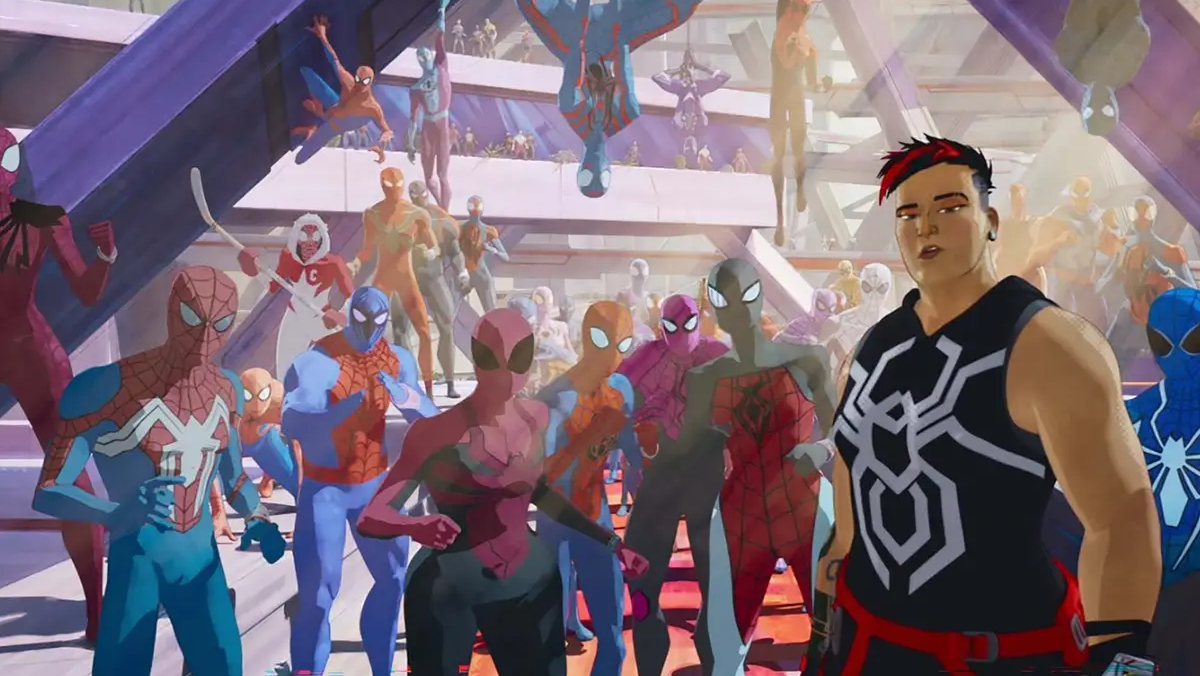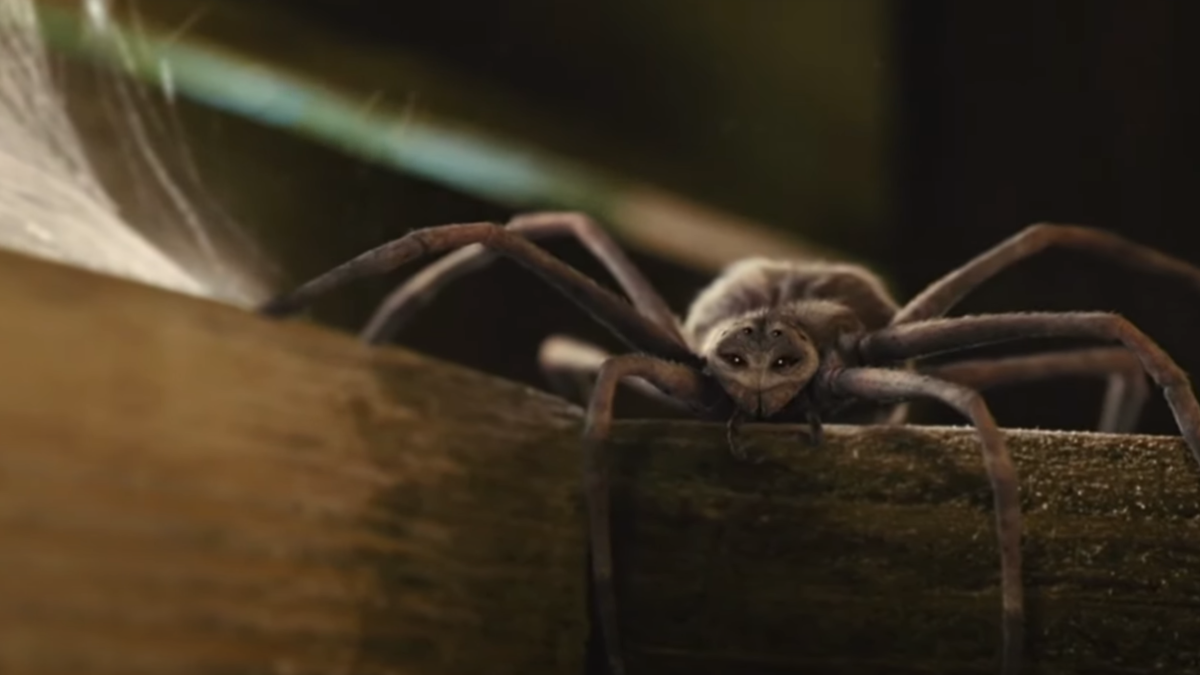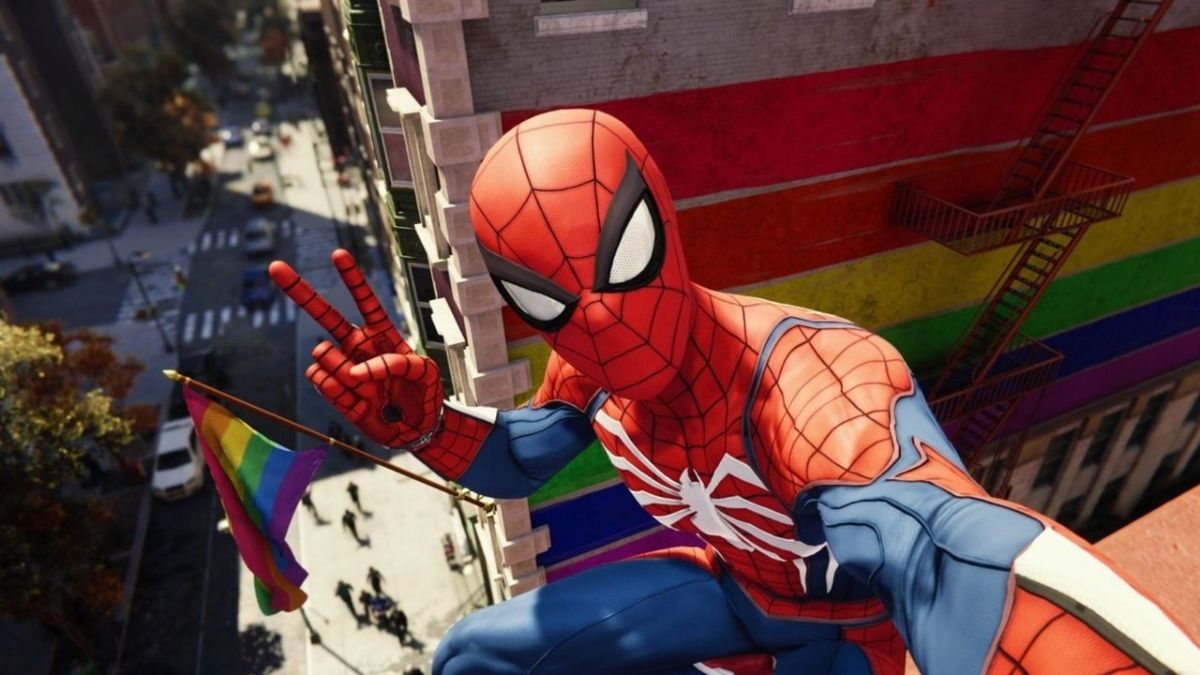It’s common knowledge that Spider-Man, in addition to doing things that a spider can’t, I.E. paying his taxes and driving a dune buggy, does whatever a spider can. With some 50,356 recorded species of spider on the books as of August of 2022, each with their own specialties granted by the endless potential of the evolutionary process, there’s an almost endless amount of possible additions to the “special skills” section of Spider-Man’s resume. Here are just a few possibilities.
Spider-Man can watch his babies eat Mary Jane

Species: Stegodyphus lineatus
Today’s secret word is “matriphagy.” When you hear the word “matriphagy,” you should scream, like on Pee Wee’s Playhouse, but for different reasons.
In the desert spider, or Stegodyphus lineatus, females with fertilized eggs will begin to produce wildly increased quantities of digestive enzymes in the lead-up to their progeny hatching, setting up for a phenomenon known as “matriphagy” (Aaaaah!). The result of this process is that the mothers digest their own organs, slowly liquifying themselves in a brine of their own chemicals from the inside out. After the babies emerge from their eggs, the mother vomits her pre-digested organs for two weeks. Her children eat the vomit, and nothing but the vomit, and if they don’t like the vomit, they can very well go to bed without supper.
Once the mother has died from puking up all of her insides, the children eat her hollowed-out corpse. It can only be assumed that the mom spider is super passive aggressive about all of this, and would hold it over her children’s heads whenever she felt she was overdue for a phone call, if she wasn’t, you know, dead.
Another fun fact about S. lineatus: They also practice polyandry, and if a male spider thinks that his mate’s eggs have been fertilized by a different male, he’ll eat them. He’ll eat the eggs. So if a spider can do that, and Spider-Man does whatever a spider can, then it follows that Spider-Man can get cheated on and then eat the babies as his way of demanding a paternity test.
Spider-Man can have trouble telling what color his clothes are

Species: Saitis barbipes
Since day one, Spider-Man has been known for his flashy, colorful costumes. It’s what makes it so jarring when he makes the switch to darker options, going through his goth phase in the aftermath of Secret Wars or donning the stealth suit in Far From Home.
It turns out that there might be a perfectly reasonable explanation for the dramatic palette swaps – namely, that he can’t tell the difference between the red suit and, for example, one that’s turned mint green after a bleach accident. It’s a problem that he probably has in common with Daredevil, and for similar reasons, not that either of them will ever notice.
According to research performed at the University of Cincinnati, spiders – even spiders rocking the vibrant reds and blues of a friendly neighborhood what-have-you, like Saitis barbipes, are missing the photoreceptors necessary to allow them to see the colors on the warm side of the spectrum. Spider-Man probably sees all of his outfits in shades of muted olive. Also, this means that he can do another thing that a spider can: Be denied a driver’s license.
Spider-Man can pretend to be Ant-Man because he’s hungry and he doesn’t want to get stung by a bee

Species: A whole bunch in the genuses Myrmarachne and Bocus
There’s an entire genus of spider that’s all about pretending to be ants. As far as coolness goes, this might seem like a step backwards – “does whatever an ant can” opens you up to getting fried with a magnifying glass and starring in one of the top three worst Indiana Jones movies – but it’s actually for a pretty wild reason.
In direct defiance of the way that almost everyone else in the world sees things, there are species of predator that don’t care about spiders, but are downright petrified of ants. Beefy jumping spiders, for example, and some types of wasp, will eat smaller spiders, but do a zany Scooby-Doo bongo-drum run when they see ants coming. It’s something about the way that one ant tends to mean that there are hundreds more ants nearby, whereas one smaller spider just means lunchtime.
So lots of spiders have taken to dressing up like ants in a sort of perverse evolutionary game of “Duck Season/Wabbit Season.” Their bodies elongate, their color patterns change, and they’ll wave their front legs over their heads to simulate having antennae. Basically, if you see Tom Holland walking around disguised as Paul Rudd, there’s probably a wasp nest nearby.
Spider-Man can make a room full of seven-year-olds cry

This one’s less scientific, but when I was in second grade, I had a teacher named Ms. Schultheiz who was perfect except for in two ways.
The first way that she wasn’t perfect was that she read Charlotte’s Web to the class. At the end of that book, when Charlotte died, the Story Carpet was struck by what would best be described as a deluge of nihilism. 22 seven-year-olds, forming a dangerously unstable but cohesive unit, accepted, as one, the pointlessness of the universe. That nothing lasts forever. That, at best, you could hope to leave behind a legion of baby spiders in your absence, drifting on the winds of uncertainty – potentially destined to carry on, but statistically more likely to be eaten by birds or trout. We wept, each of us, for the remainder of that afternoon, all because of Charlotte and her introductory lesson in the meaninglessness of existence.
So that’s also something that a spider can do.
The other way that Ms. Schultheiz wasn’t perfect was that a couple of months later, she read us Bridge to Terabithia and we damned near rioted.

